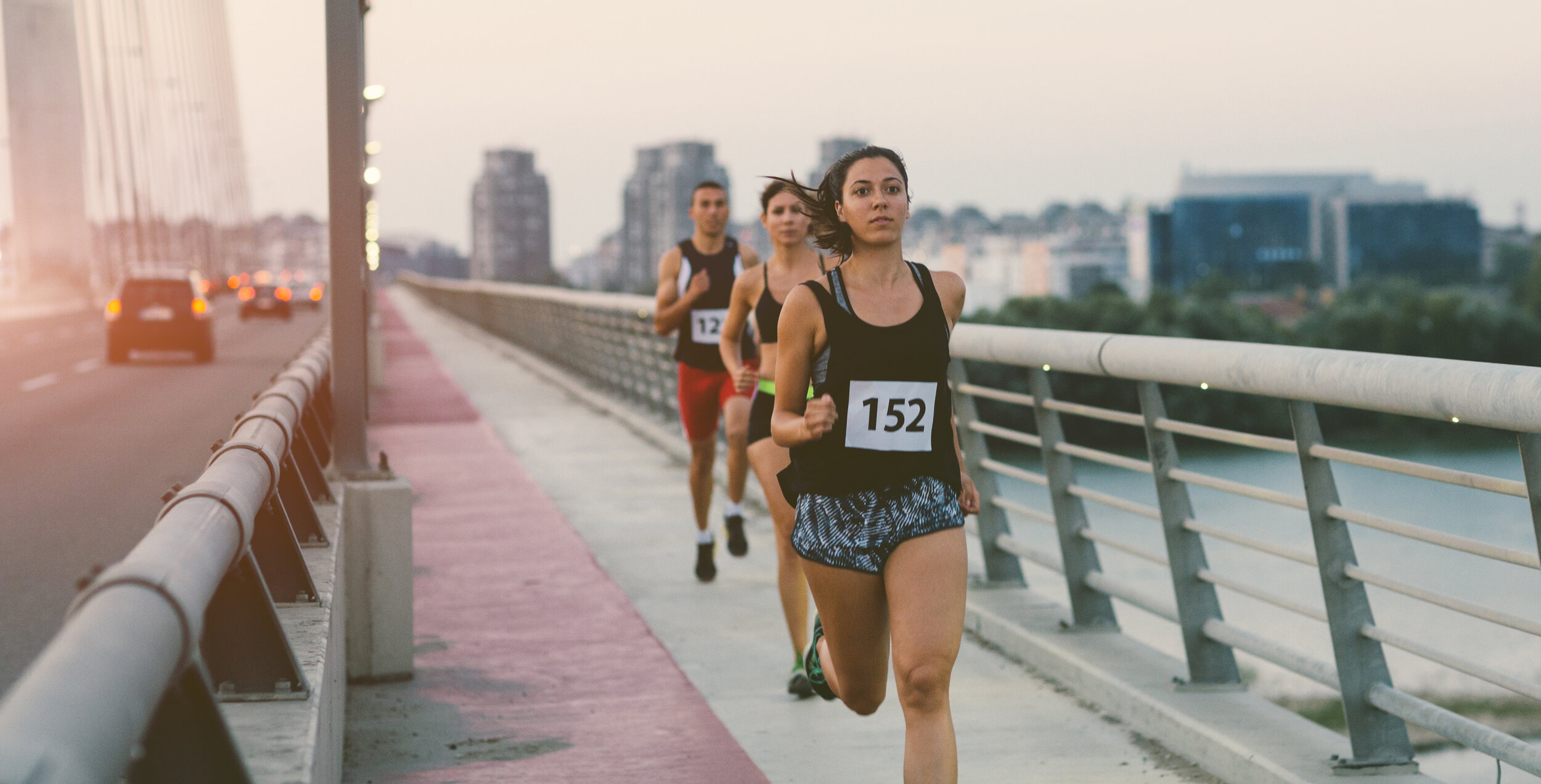Why are athletes more likely to have leakage than sedentary folks?
A recent systematic review by Teixeira et. al. found that in female athletes, physical exercise may be a risk factor for urinary incontinence(UI).(1) Another review found that "high-impact activities showed a 1.9-fold prevalence [of UI] over medium-impact activities."(2) They found an important link between low and high impact activity: the prevalence of UI varied from 5.56% in low-impact activity to 80% in trampolining.
What’s the deal? Athletes work their bodies hard. They place high demands on themselves, training hard physically and mentally. So why are they experiencing incontinence in higher numbers? While some studies have attempted to prove why exactly this is the case, the research has yet to paint a clear picture.
Here are a few of my theories that explain why this could be happening. These theories are based on existing research, clinical experience and opinion:
1. General exercise may not be enough to strengthen the pelvic floor.
Research has shown that the pelvic floor does not automatically strength while someone exercises. Squats may make an athletes quadriceps and glutes stronger, but maybe not their pelvic floor. Unless someone learns to engage their pelvic floor correctly, it’s possible that these muscles are not activating, and thus strengthening, while the rest of the athlete is. That can lead to a muscle imbalance during which the pelvic floor cannot stand up to the activity the rest of the body can.
To get a bit deeper into it, the pelvic floor is part of your core. If someone is working on core strength, which many athletes do, but not their pelvic floor, which many athletes do not, they may end up with a system that is overloaded through the front (the abdominals) and under-supported through the bottom (the pelvic floor). This leads to a pressure dynamic that increases the force pushing downwards through already weak muscles. This increased pressure and muscle weakness can lead to incontinence.
(image by @corestrengthmomma on IG)
2. Athletes can have tension in their pelvic floor.
Athletic training frequently focuses on strength and mobility training. Athletes know that they need not only the strength to perform, but the mobility to perform safely and effectively. However many of us don't know how to stretch, mobilize and relax our pelvic floors. This means that those who know how to engage their pelvic floors and activate them seamlessly during strength training may be tightening while engaging without ever relaxing and stretching. Imagine your hamstrings after repeated hamstring curls without ever stretching them out afterwards. Ouch, right?
Athletes may be strengthening their pelvic floor, while also shortening the muscles that play an integral role in our bladder, bowel and sexual control and function. While strong muscles are good, tight muscles are not.
In many parts of our body, tight muscles may lead to pain and discomfort. Tight muscles in our shoulders and neck may cause headaches, jaw and neck pain. Tight muscles in our legs may cause back, hip and knee pain. Tightness in our pelvic floor muscles can cause pelvic pain, urinary incontinence, fecal incontinence, pain with sex, urinary frequency and urgency, constipation and more.
3. They may have underlying pelvic floor problems and the increased activity exacerbates them.
Pelvic floor dysfunction is common, impacting roughly 30% of people with vaginas (though I expect the real number is higher) and many don’t know what to do to address their symptoms. Many people don't have symptoms until they stress their systems in some way. For some, that stress may come in the form of pregnancy or childbirth, for others it may be in the form of menopause. For athletes, it may be the intensity of training. It could just be that the amount of stress they put their bodies under unmasks underlying issues, and without the proper guidance and management, it leads to leakage.
Regardless of the reason, this can be helped. Kids don’t have to leak in gym class. College athletes don’t have to leak in practice. Athletes don’t have to leak while competing.
This is treatable. If you leak with exercise, set up a call with me today to discuss your options.
1. Texeira et. al. Int Urogynecol J. 2018. Prevalence of urinary incontinence in female athletes: a systematic review with meta-analysis.
2. de Mattos Lourenco TR et. al. Int Urogynecol J. 2018. Urinary incontinence in female athletes: a systematic review.




